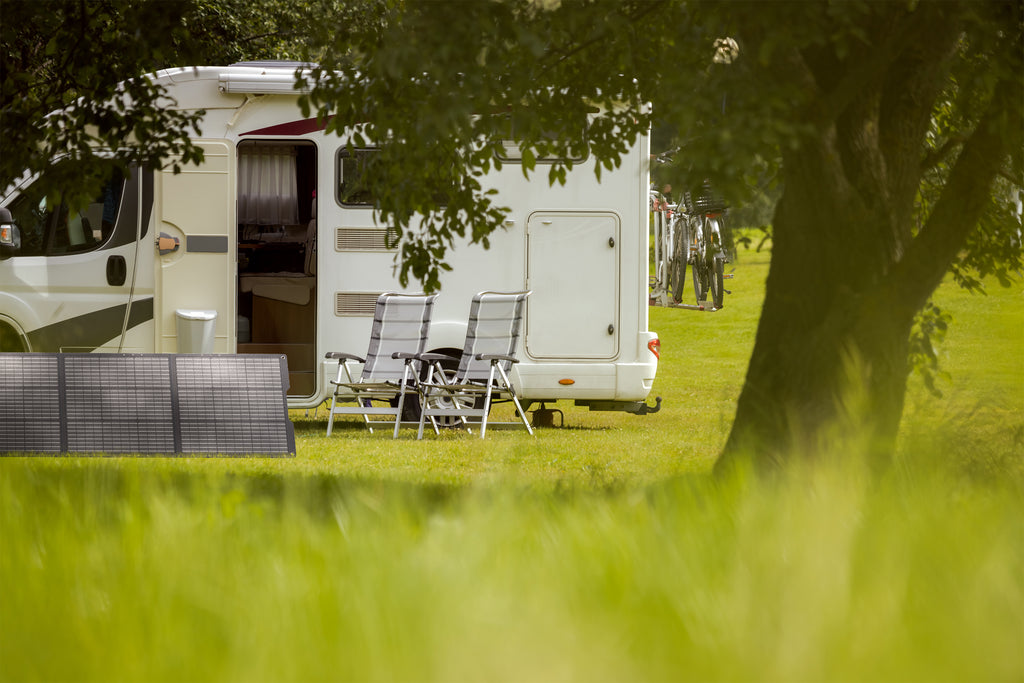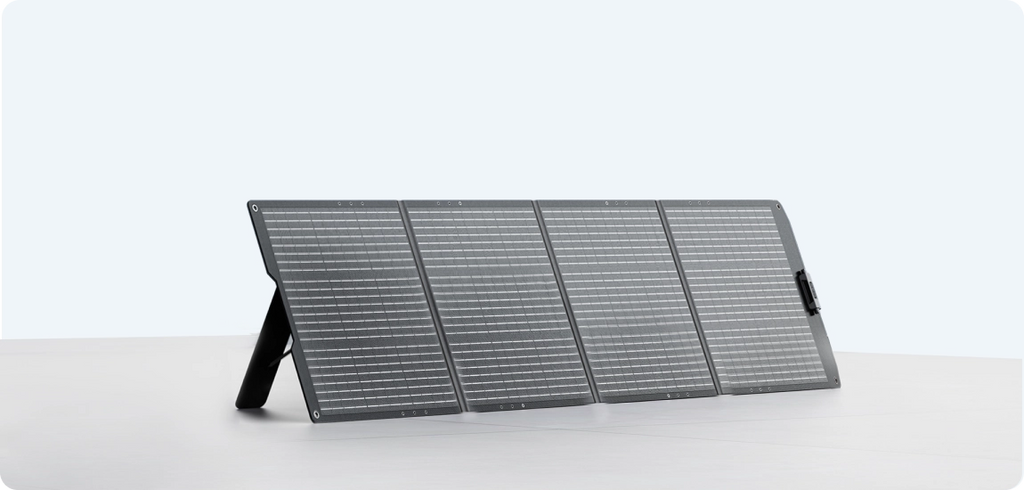As the nomadic lifestyle continues to gain traction, the demand for solar-powered RVs has soared. This is due to their sustainability, making them the best companion for the life on the road lifestyle.

Solar-powered RVs present the opportunity of moving without severely affecting the environment. However, to effectively transition your RV into solar power, you must have the complete amount of energy you need. The number of solar panels will differ from one individual to another. Also, the number will revolve around factors like usage in terms of energy, types of appliances, and movement from one place to another.
This guide will take you through the process of calculating your solar needs so that you may be in a position to make an informed decision on how to go about your solar-powered adventures.
Basics on Solar Power
Understanding some of the basics about solar power is important while planning for a solar system installation in your RV. Some of the key terminologies include:
- Watts (W): It represents the power, which indicates how much energy a device uses.
- Amps (A): This is similar to fluid flow, for instance, water in a pipe. It indicates the manner in which electricity flows.
- Volts (V): This represents electrical pressure. Higher volts mean more powerful electricity.
Your RV’s solar systems have to cater to several devices with different power requirements. They are categorised under essential appliances and luxury appliances.
Essential for most trips are lighting, refrigerators, and charging for essential gadgets. Luxury appliances like air conditioners, microwaves, and entertainment systems need more energy but are not considered all that important for many trips.
Identifying the power requirements of these appliances is critical for creating an effective solar system for your RV. Each of these appliances has different wattage ratings. Also, the frequency of use will contribute to the size of the solar array that you will need.
Calculating Power Consumption
To size your solar system properly, you first need to calculate your daily power usage. Here’s how to go about it:
- List All Appliances: Create a list of everything in your RV, from lighting and fridge to laptops.
- Wattage Identification: Find the consumption in watts from the manual or label of each appliance. If the rating is in amps, convert it to watts where applicable.
- Estimation For Average Daily Usage: Estimate how many hours you use each appliance daily. It is better to overestimate than to underestimate to avoid insufficient power.
- Total Watt-Hours Calculation: Multiply the wattage consumption of each appliance by the number of hours you use it daily. This will give you the watt-hours (Wh). For instance, If you use a 40Wfan for 5 hours daily, the wattage hour will be 40W x 5 hrs, which is 200Wh.
Add up the watt-hours of all appliances to get your daily energy use. The sum is crucial in sizing your battery bank and solar array.
How to Size Your Battery Bank
Basically, your RV's solar power all comes down to accurately sizing the solar array. A basic rule of thumb is 100W of solar panel per 100Ah of battery capacity. Other considerations include:
- Geographic Location and Sunlight Hours:The availability of sunlight in a specific location affects the amount and intensity of solar charging. Shadier areas or less sunny areas will require more panels.
- High Energy Appliances:High energy usage or large appliances in your RV could necessitate a larger solar array.
- Backup Power Considerations:Plan for how many sunless days you wish to plan for. This will affect your panel and battery sizes.
Example Calculation
As an illustration, suppose that you have a battery bank capacity of 400Ah in your RV and a daily power consumption of 1500W. 400W would have then been the minimum solar array that would be required. However, if you are in a place like Seattle that has a little less sun and uses appliances with high power consumption, such as air conditioning, then shooting for a 600W solar setup would be more ideal.

Assessing your specific energy demands and environmental factors, you can accurately calculate exactly what size your solar array needs to be in order to give that extra push needed to satisfy the power demands of your RV.
Pick the Right Components
Selecting all the right components is essential while installing an efficient solar system for your RV. The major components include:
- Solar Panels: There are mainly two types of solar panels: Photovoltaic, and Thin film panels. Photovoltaic (PV) panels are efficient and durable, making them ideal for RVs with restricted space. Thin-film panels, on the other hand, are thinner and more flexible, but they have low efficiency.
- Charge Controllers: These come in two types: MPPT (Maximum Power Point Tracking) and PMW (Pulse Width Modulation). MPPT controllers are efficient but expensive. Meanwhile, PWM controllers are simpler and cheaper but less effective.
- System Voltage: RV system works on either 12V or 24V. The 12V systems are for the smaller setups, whereas 24V systems would be used for the larger setups, which are more efficient and would require voltage converters for some appliances.
- Battery Types: There are different types of batteries, with the most common types being Lithium-ion, AGM (Absorbent Glass Mat), and Lead-acid. Lithium-ion batteries are light but have longer lifespans and efficiency, but they are more expensive. AGM and Lead-acid batteries are cheaper but heavier and have shorter lifespans.
Your choice of components will be guided by your power requirement, budget, and space within the RV.
Latest Advancements in Solar Panel Technology
Innovation has led to some breakthroughs and advancements with solar panel technology that can greatly impact the way in which RV users power their vehicles:
- Perovskite Solar Cells:These cells have a huge potential and can prove to be game changers as they are much more energy efficient than the traditional silicon-based ones. Furthermore, these are capable of absorbing different wavelengths of sunlight, which results in producing more electricity from the same amount of sunlight compared to traditional solar cells.
- Bifacial Modules:These modules are able to harvest sunlight on both sides, thereby doubling the output. This might be especially helpful in cases of RVs parked in open areas where the available sunlight is reflected from the ground onto the back of the panels.
- Decentralised Solar Power Systems: The development of microgrid technology provides more control over energy production and consumption. This is a potential game-changer within the ambit of RV communities or groups travelling together.
Not only do these innovations promise to make solar power more efficient and accessible towards the use of RVs, but they also push us towards a more independent and sustainable way of RV travel.
Rounding it up
To install an RV solar system, the following are essential: Accurate calculation of your daily power needs and sticking to the basic rule of 100W of solar panels per 100Ah of battery capacity, adjustment for your specific location as well as appliance power demands. It is These steps ensure a sustainable, efficient solar setup for your RV, ready for your on-the-road adventures. Also, you should ensure that you get your solar panels and batteries from trusted manufacturers like Growatt.






